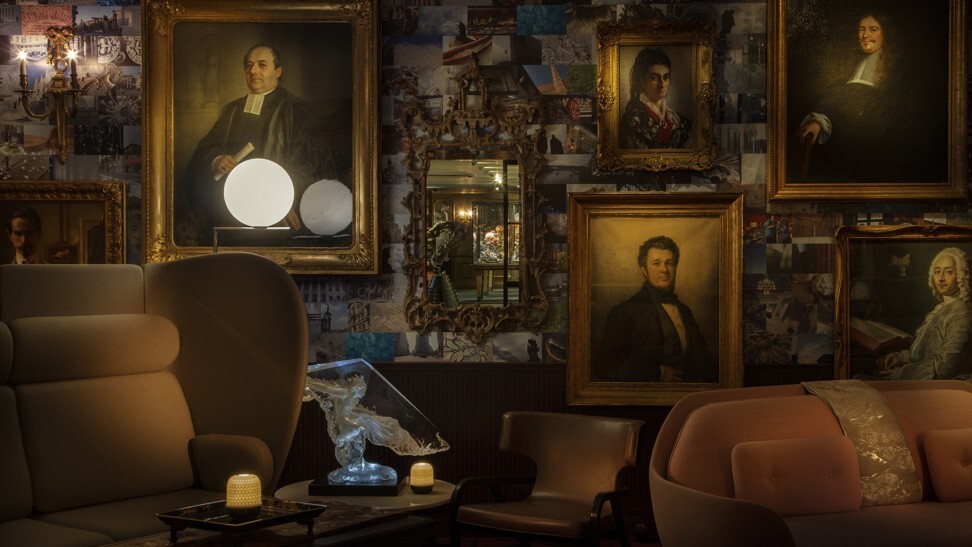
Inside Hong Kong designer Alan Chan’s fabulous ‘chamber of art and curiosities’
Space 27, in Quarry Bay, is designer Alan Chan’s loft-turned-private museum filled with 400 pieces from his wildly eclectic collection, curated to celebrate his 70th birthday
About 30 years ago, Alan Chan Yau-kin – designer, brand consultant and shrewd property investor – bought two floors of an industrial space in Quarry Bay. Six years ago, he took one back from his tenants and after a badly needed overhaul (the building dates from 1955 and still has a temperamental lift), it emerged as a white-walled, cement-floored loft. He named it Space 27 – 27 being his lucky number – and rented it out to such high-end brands as Marc Jacobs, Chanel and Celine for functions.
In January, on the 27th, Chan turned 70. Since his 60th birthday, he’s marked each occasion with parties in different venues. This year, however, he felt he should also celebrate 50 years in the creative industry and the 40th anniversary of Alan Chan Design Company.
“Who is Alan Chan?” he muses, one recent afternoon before supplying the answer: “Not only a designer but an artist, a collector, a creator. I wanted my guests to see who I am.”
Which is how Space 27 came to be transformed into what his press release terms a “Chamber of Art and Curiosities Illuminating His Lifelong Passion Behind Collecting”. That there’s a press statement suggests a public dimension but unless you are a friend, a person worth knowing or a lucky journalist you won’t have access to a genuine wonder – a Hong Kong version of a kunstkammer curiosity cabinet spread across 5,000 square feet, plus a 2,000 sq ft terrace on which to get your breath back.
It’s easy to create contrasts. But how do you create harmony?
Chan likes to refer to it as a home away from home, which could only be true of people who live in a space filled with wildly divergent objects (a Buzz Lightyear toy, a French dial telephone, a metre-high statue of Rich Uncle Pennybags from Monopoly), have mega-successful artistic friends (a portrait of Chan by Zeng Fanzhi hangs at the entrance) and never sleep (there are no bedrooms).
He’s closer to the mark when he says it’s “an apartment-style private museum”; amid the artefacts, enough useful furniture has been borrowed from Colourliving in Wan Chai for visitors’ comfort. Most of all, it’s like peering into the hospitable nest of a cultured magpie with an enthusiastic eye, who has spent decades flitting about the world gathering objects.
About 400 pieces are on display. He estimates that’s one-tenth of his collection, which is stored in three Chai Wan warehouses. From 2015 to 2018, some had a previous airing at the Park Hyatt Shanghai in what he calls “the first and only pop-up store in the world run by a private collector”. The shop (actually called Home Away From Home) would open at 10am “and after 7pm, it was my private club”.
His pleasure in the Hong Kong space is that it’s truly private, it’s in his hometown and he’s mapped out every molecule of it. His mission was to reveal a succession of “astonishing” surprises in such a way that they didn’t jar the guests.
“It’s easy to create contrasts,” he says. “But how do you create harmony?” Again, he has the answer: design four rooms each with its own artwork, lighting, proportions and colour scheme, but ensure they add up to a distinctive Chan-whole. He is his own influence. “I’m known for fusion,” he states. “I came up with the slogan Oriental Passion Western Harmony.”
So in the Drawing Room, where guests congregate before dinner, he has gathered what he describes as his contemporary, international collection, where works by Marc Quinn and Peter Monaghan preside over Mickey Mouse, who waves at Buddha. One of Chan’s first sketches was of Mickey; he’d pay 10 cents to watch him on TV at a herbal-tea shop in 1960s Wan Chai, where his father had a fruit shop.
Nearby, a video plays images of recent Alan Chan projects (Maxim’s, Qeelin jewellery, his gallery in Japan named Kyoto 27); a top hat dangles, rakishly, from a corner of the screen. Bugs Bunny holds a – stopped – clock.
The entire length of the outside wall to the terrace has been converted into glass, striped with green stickers to mimic Kyoto’s Arashiyama bamboo grove. Chan designed it, as he did the large free-standing display cases in the adjoining Cabinet Room. One is filled with China Trade silverware, which he’s been collecting in London and Paris since the 1980s; another is peopled with Kewpie dolls, strolling on a carpet of eucalyptus leaves “like Adam and Eve in the garden”.
Nearby, there’s a statue of an altar boy he saw at a London auction. “He was just talking to me, I had to buy it.” (Asked what the statue was saying, Chan says, wryly, “Take it easy!” A visitor imagines the Night at the Museum chatter after everyone has left.)
In the Chef’s Table room, where he holds dinner parties, the theme is black-and-white: photography mixed with ink calligraphy. Works by Albert Watson, Zao Wou-Ki and Yuichi Inoue harmoniously line the walls. Chan designed the black and white wallpaper. He designed the layout; the kitchen area is screened from diners by an ornithological display of stuffed birds next to a working cuckoo clock. He designs the abundant floral displays. Looking at an André Villers photo of Picasso in his studio, he murmurs, a little wistfully, “I wish I had an atelier like that.”
After dining, his guests retire to the low-lit spacious salon that is the Music Room. The wallpaper is another Alan Chan creation. It features iPhone photos from his travels. European oil paintings culled from European markets hang on one wall; French movie posters jostle on another. Damien Hirst’s butterflies flap on a third. There are Alan Chan coasters on the tables.
Three beautifully detailed figurative sketches by an unknown artist, bought from a London dealer, lean against a wall. “Zeng Fanzhi said, ‘No one in China could do these,’” Chan says, gazing at them intently. He yearns to begin painting his own works. “I have a vision,” he says later. But he also has a team of 30 people and a business whose longevity he’s publicly celebrating.
His chamber of curiosities, which took six weeks to assemble, was never intended to last. On the night of his birthday party, his biggest concern, he says, was that people would merely comment on Alan Chan’s wealth. “What I want to hear is, ‘Wow, we know Alan Chan has depth and diversity of taste.’”
The pandemic has given it longer life. “It’s become more and more exciting for me, meeting new friends because of the monthly dinners. So many people ask if I’ll do a private club. I’m not interested in that. I want to open an actual museum, a mini-Guggenheim.”
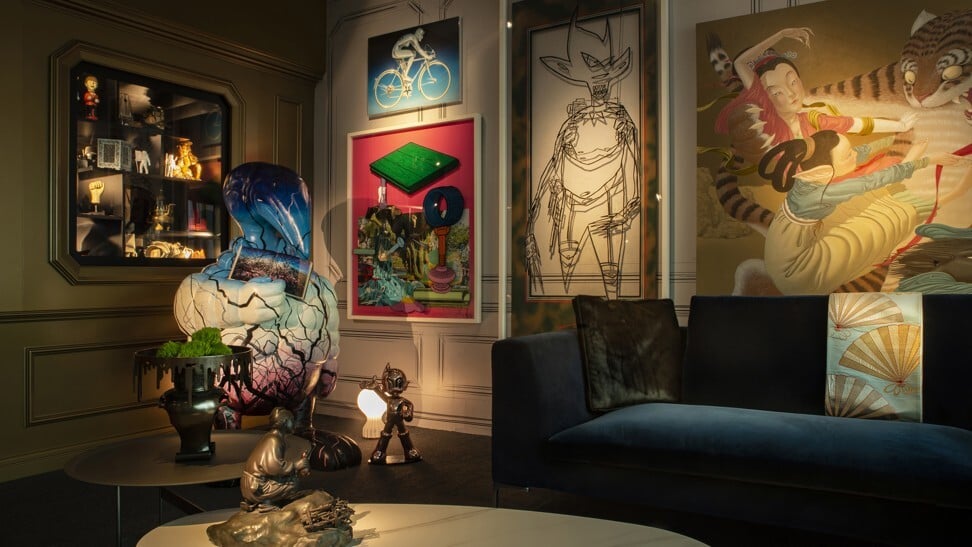
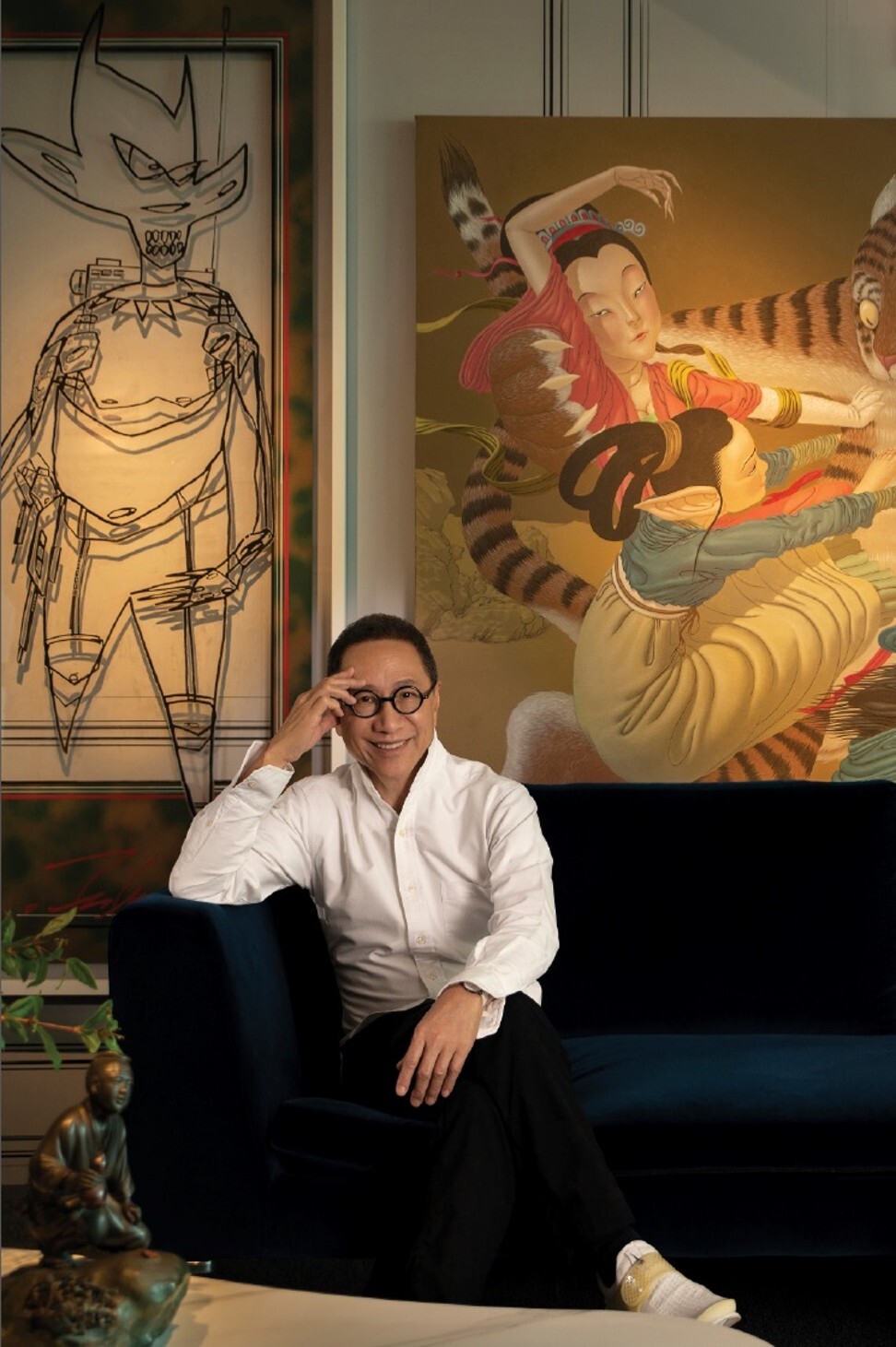
The Drawing Room Chan sits in the Drawing Room of his private museum in Quarry Bay, ready to receive guests.

To the far right is a photograph of the Deutsche Oper am Rhein opera house in Düsseldorf, by German photographer Candida Höfer. To the right of the television are Transition, by Irish artist Peter Monaghan, and Paris Tower, by Japanese photographer Orie Ichihashi. Bugs Bunny (with stopped clock) and a top hat mix it up beside the TV, beneath which is artwork by Futura.
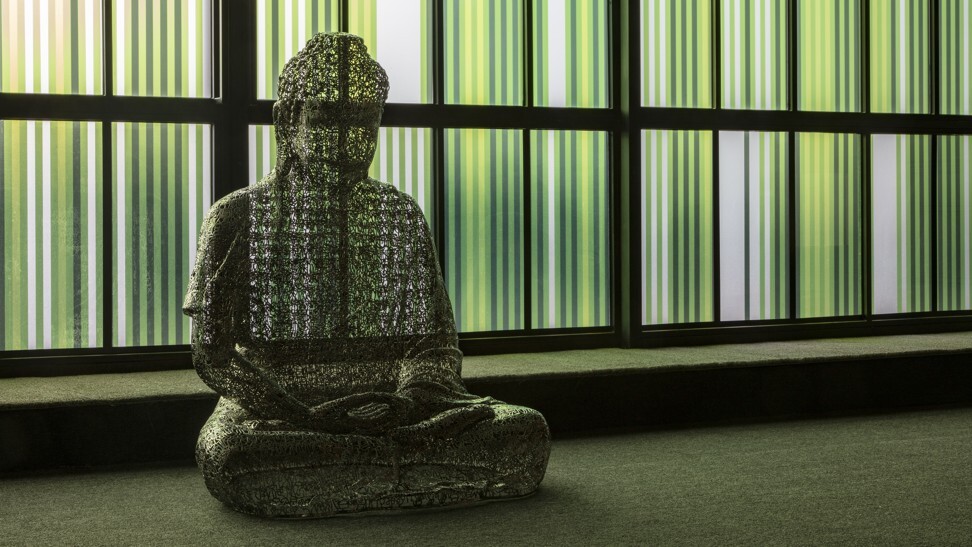
The Drawing Room Revelation, a stainless-steel sculpture by Chinese artist Zheng Lu (zhengluart.com), sits in contemplation in front of the terrace window. The light installation by Chan uses several shades of green stickers to recreate the effect of the Arashiyama bamboo grove in Kyoto.

The Cabinet Room In the Cabinet Room, Chan displays some of his China, Japan and Hong Kong trade silverware, which he began collecting in Europe 30 years ago and which date back 150 years. The Japanese Kewpie dolls, frolicking on eucalyptus leaves, are, he says, “like Adam and Eve in the garden”.
The cabinet on the left contains a selection of miscellaneous figurines collected from Asia and Europe, some of which Chan has had since childhood.
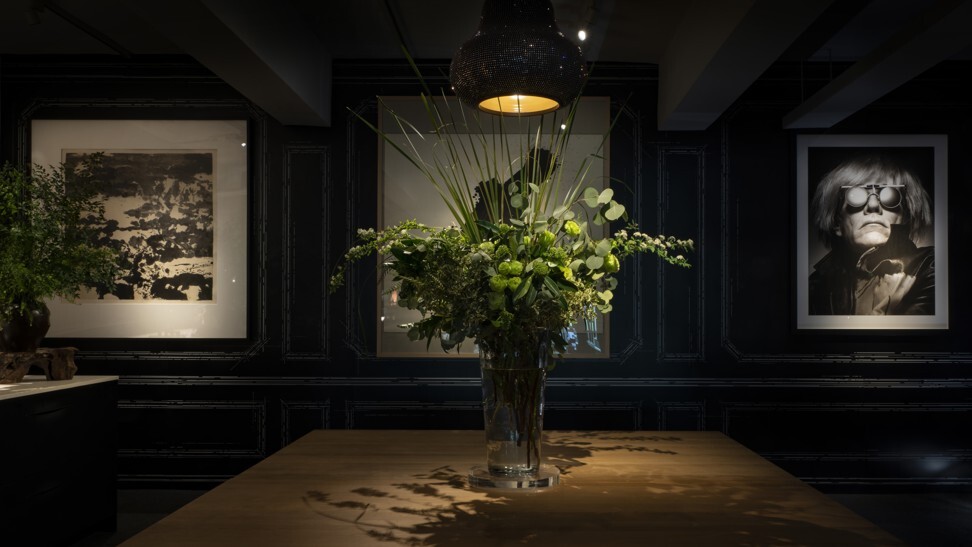

The Chef’s Table Two oak Fritz Hansen tables – placed side by side – can seat a maximum of 12 people. Meals are served alongside floral displays created by Chan, who likes to go foraging in Mong Kok flower market. Making up the dinner setting, the Imari-yaki tableware, between 80 and 120 years old, is from a Sunday market in Kyoto and is the newest addition to his collection.

The Music Room Although the Music Room deliberately recreates the feel of a 19th century European salon, including Louis Vuitton vintage trunks, the wallpaper consists of iPhone images from Chan’s 21st century travels. The dark B&B Italia-Maxalto sofa and side tables were from Colourliving. The vintage wall lamp was bought in London last year. The small, rechargeable LED lampions were by Bernardaud (bernardaud.com).
On the wall behind the dark sofa, the portrait of Casimir de Sainte-Aldegonde was by French painter Auguste Legras (1817-1887). To its right is a portrait of French colonial diplomat and governor Paul Blanchard de la Brosse, by Pierre Carrier-Belleuse (1851-1932). The sconce is one of a pair of late 19th century wall lights bought in Paris.
